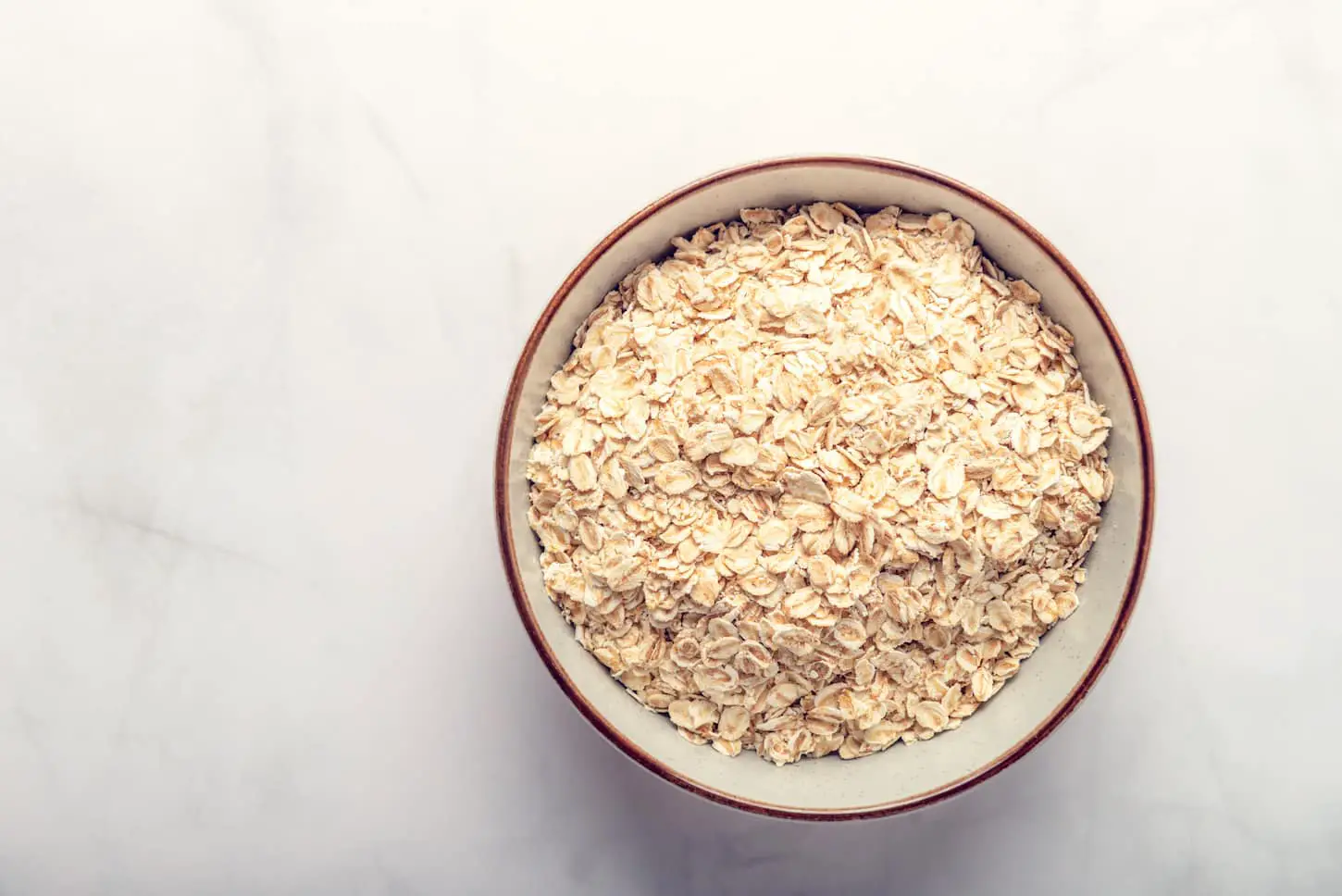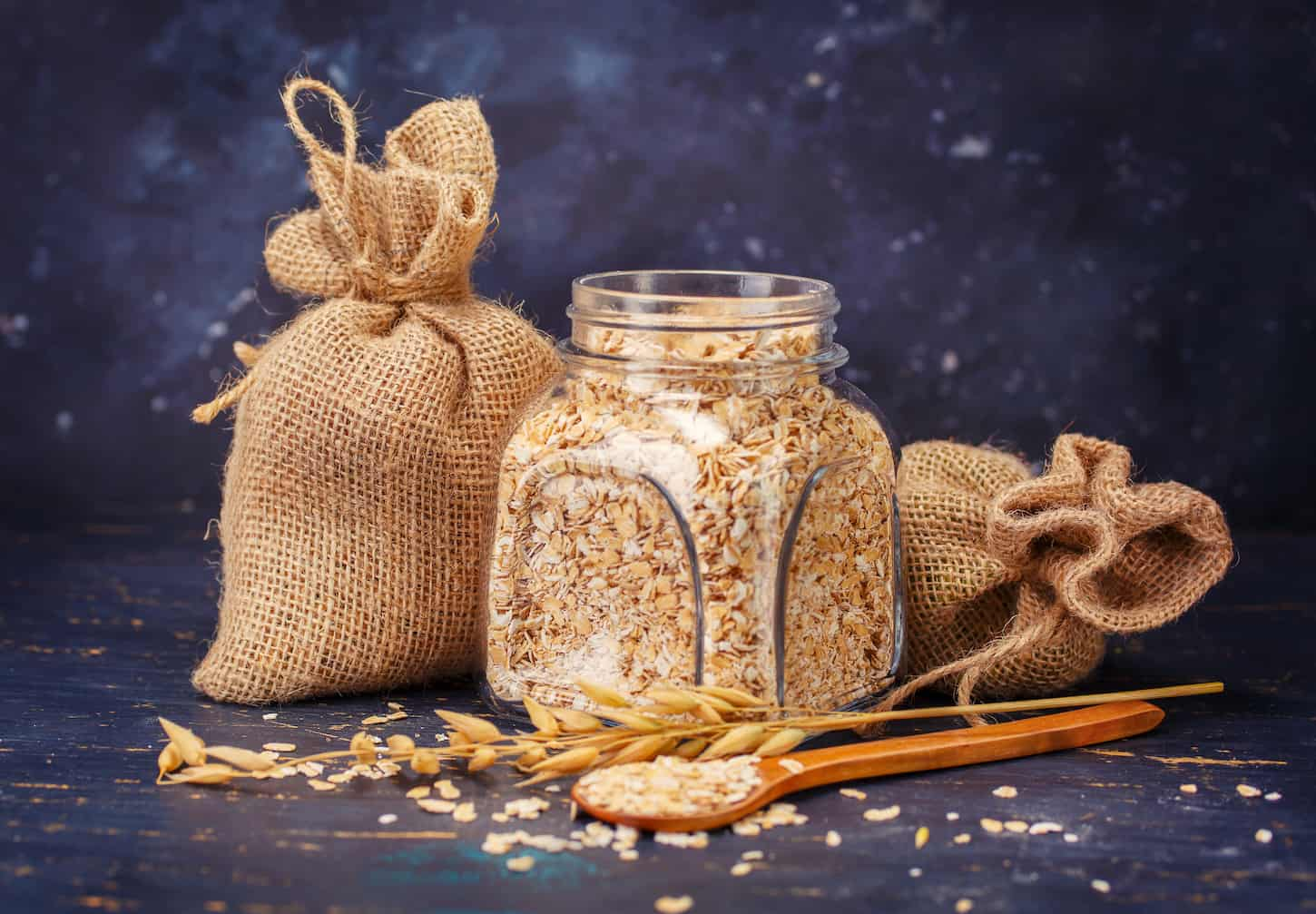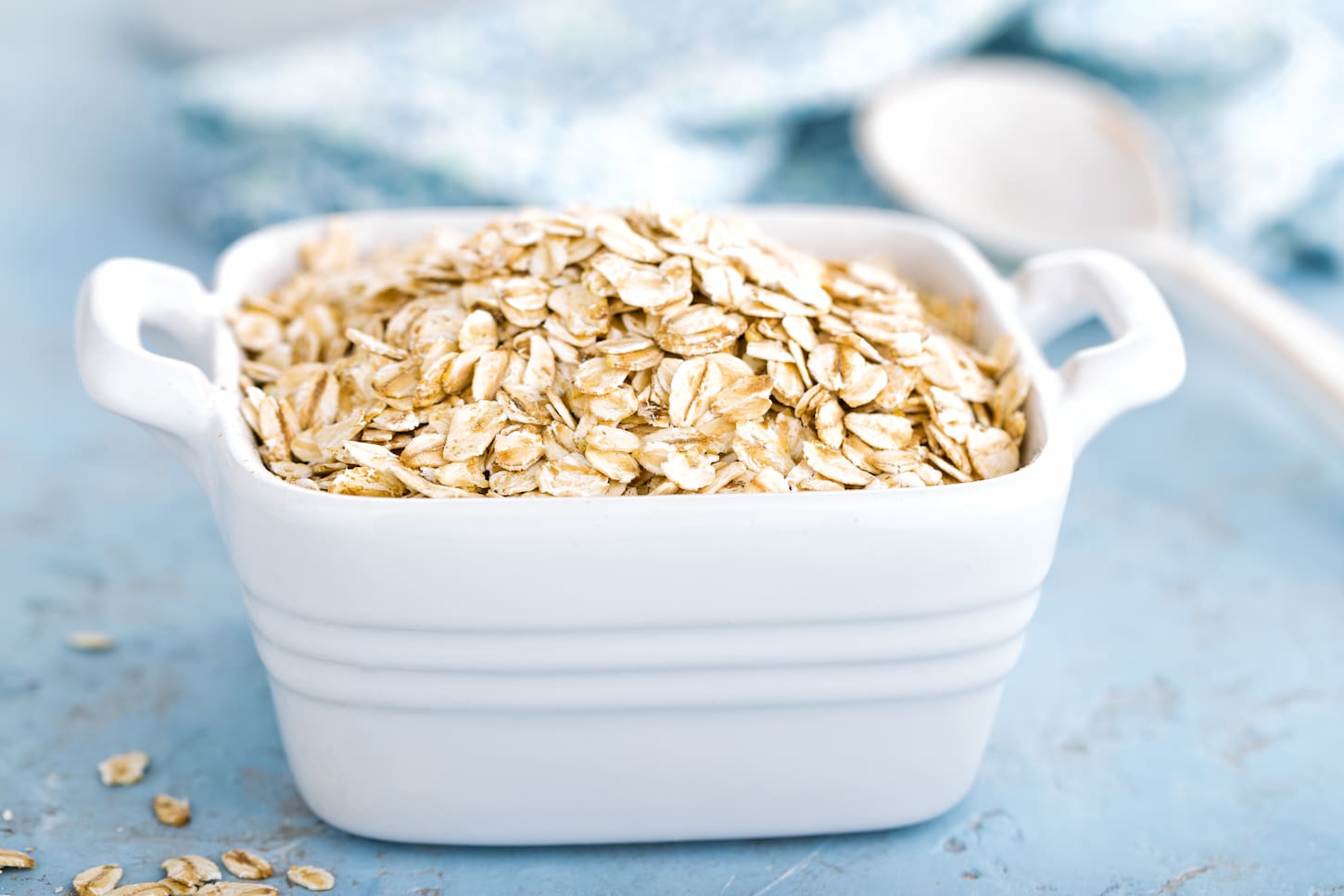With oats being a tasty source of fiber, vitamins, and antioxidants, it’s no surprise that many people would love to stock up on them. I’ve done it myself. But did you know that there’s a right way to store oats long-term? Because, as I’ve learned, they do go bad.
Oats are best stored in an airtight vessel in a cool, dark area of the home. The fridge, freezer, or pantry are the best spots to store oats. Airtight storage options include glass or plastic containers, vacuum-sealed containers, canning, mylar bags, and food-grade buckets.
Here’s our handy guide on how to store oats long-term!

How Long Can You Store Oats?
Uncooked oats will last up to two years in an airtight container.
- Commercially processed oats have a shorter shelf-life, generally of up to one year.
- Un-steamed oats will last up to four months.
- Cooked oats will only last between four days and three months, depending on how they are stored.
The shelf life of your oats can depend on several factors, including the method of storage, the type of oat, whether your oats have been cooked, and any additional ingredients.
Unfortunately, cooked oats will last only a few days unless you freeze them in an airtight container. When frozen, cooked oats can last up to three months. This means you can prepare your family’s favorite breakfast weeks in advance!
You can store your oats for up to two years in an airtight container. This applies to processed and uncooked oats. If you’ve purchased your oats from the store and they’ve undergone commercial processing, they will likely last up to one year. The steaming process that oats go through to be packaged keeps them fresher for longer. Oats that have not been steamed will last up to four months when properly stored.
Besides airtight containers, you can try vacuum-sealing your oats in plastic bags. You can also try storing them in mylar bags, food-grade buckets with gamma lids, and #10 cans. Of course, these methods of storage are for you to experiment with!
The best solution is the one that works for you and your family! As long as your containers seal correctly, you should have no problem with your oats staying fresh for months, if not years.
How to Store Oats Long Term
Oats, no matter their form, store best in an airtight container in an environment that’s temperature, light, and controlled for oxygen. Popular storage options include freezing, storing in a container in a pantry, or vacuum-sealing a container to put in a pantry or a freezer.
That’s the general answer. Now, let’s talk about how to store specific types of oats or cuts of oats.
Storing tips for rolled, whole, or old-fashioned oats
The best way to store rolled, whole, or old-fashioned oats for longer periods is to place them in an airtight container. This container should be placed in a cool, dark place such as a cellar, basement, or the back of a pantry.
Rolled, whole, or old-fashioned oats? These are all names for the same type of oat! Rolled oats are the most versatile type of oat, and fortunately, they are also the easiest to store long-term. This type of oat can last for years if stored properly.
Storing them in an airtight container in a cool, dark place is ideal; you can add oxygen absorbers to your container. With the addition of the oxygen absorber packet, your rolled oats can last for around 25 years. That’s if your family doesn’t eat it all first!
Rolled oats are flattened, therefore they can cook faster than other types of oats. They are also usually lightly toasted and are perfect for oatmeal, overnight oats, cookies, and loaves of bread.
How to store Steel-cut or Irish oats
The best way to store steel-cut or Irish oats is in an airtight container placed in a temperature-controlled space. Storing steel-cut oats is best done in a fridge, freezer, or at the back of a pantry.
The most ideal place to store your steel-cut or Irish oats is in the freezer, along with an oxygen absorber packet. This will allow your steel-cut oats to stay fresh for between one and two years.
Steel-cut oats tend to spoil faster than other types of oats so you may want to be extra careful when storing these oats. Ensure that your containers are the right size for the number of oats you have to store. You don’t want a container that’s too large because you don’t want your oats to have too much oxygen while in storage.
Compared to rolled oats, steel-cut oats are much coarser and have more of a nutty flavor. They can also be chewier and take longer to prepare. This makes steel-cut oats perfect for heartier oatmeal recipes and filling overnight oats recipes.
Storing Oat Flour
Oat flour is best stored in the fridge or freezer in an airtight container. If a freezer is unavailable, you can also store oat flour in a cool, dark space like the back of a pantry. It’s best to keep oat flour out of direct sunlight, and away from oxygen-rich spaces.
Many flours store best when kept in low-temperature spaces like the fridge or freezer. Additionally, oat flour can attract small bugs or insects so it’s best to store it in an airtight container. The lack of oxygen will help prevent your oat flour from going bad.
Oat flour is made by blending whole oats into a fine powder. It’s really easy to achieve at home and can be used as a gluten-free substitute in your baked goods. You can also use oat flour similar to cornstarch. It’s nuttier and can thicken up any soup, stew, or broth.
If you’re gluten-intolerant, it’s best to ensure that your oats themselves are certified to be gluten-free.

Why Do Oats Go Bad?
Oats usually go bad if they’re not stored properly. The presence of oxygen, moisture, and fluctuating temperatures can cause your oats to grow moldy. Additionally, these conditions may invite insects or other pests to feed on oats.
Oats can last between months and years if stored correctly. Any changes in temperature or exposure to sunlight can promote the growth of bacteria or fungi. If your containers do not seal correctly, you may find inspects eating away at your oats.
How Can You Tell if Oats Stored Have Gone Bad?
To tell if your stored oats have gone bad, check them for mold and inspect their color, smell, and texture. If the stored oats don’t smell, look, or feel right, it’s always safer to discard them than to risk eating potentially unsafe foods.
The more subtle signs that your oats have gone bad can be found by inspecting the color, smell, and texture of the oats.
The oats should be a uniform, light brown color. Some oats are more cream-colored than brown. Any change in color can either be a sign of bacterial or fungal growth or an insect infestation.
Oats have a signature nutty smell. If your oats have an overpoweringly unpleasant smell, this too can be a sign of mold or pesky pests.
Changes in the texture of the oats can also be a sign that it has gone bad. Oats typically have a soft texture, depending on the type of oat and how it was processed.
An obvious sign that your oats have gone bad is mold. When checking for mold, inspect the oats and storage area carefully for any signs of mold. Ingesting mold can be extremely detrimental to your health, so don’t take any chances here!
If you store your oats in your own containers, it may help to make a note of the expiration date. This can help greatly when deciding if your oats have gone bad. Additionally, it’s good to familiarize yourself with the natural smell, color, and texture of your oats to identify abnormalities.
Best Ways to Use Oats from Long-Term Food Storage
The most popular ways to use oats are oatmeal and baked goods. When ground, oats make excellent flour that can be used in baking, soups, and stews! There really are tons of unique ways to use up your long-term storage oats.
While oatmeal is an obvious way to use oats, your family may enjoy wholesome oatmeal muffins or healthy oatmeal cookies. These make great snacks for school lunches!
Less obvious ways to use oats include replacing the breadcrumbs in your meatballs with oats, baked oatmeal, and oatmeal pancakes.
If you’re looking to use up a large batch of oats, you can consider grinding them up in a food processor until they are a fine powder. Oat flour can be used as a thickening agent, or as a replacement for normal flour in baking.
My favorite way to use oats from storage is to make oatmeal chocolate chip cookies with them. Those always turn out well and are a huge hit with the whole family.
Oats are extremely versatile and store well. It’s advisable to invest in good quality airtight containers. These can be plastic or glass. Additionally, allocate a spot in your fridge or a deep freezer for your oats. This is preferably at the back where it will be least exposed to natural light and changes in temperature.
Whether you prefer rolled or steel-cut oats, there are a plethora of recipes you can add your stored oats to. These include muffins, pancakes, cookies, meatballs, and risotto!
Before using your stored oats, inspect them in case they have gone bad. Check for signs of mold or insects. If you suspect that you’ve eaten oats that have gone bad and are experiencing adverse symptoms, you should consult with your doctor or healthcare provider for treatment.

Key Takeaways and Next Steps
Oats are a great addition to any food storage because of how versatile, easy to use, and awesome they are. Even if you’re just adding a little bit to start, it’s a great first step.
In fact, don’t go right out and buy a 30-year supply of oats in number 10 cans. Having food stored won’t help you if you don’t know how to use it. So make sure that oats are something you use, and then find ways to build your food storage using oats.
Then, make sure you check out any of these articles that you’d like to know more about.
- How Long Does Cereal Last? (Open, Unopened, Long-term Storage)
- Can You Store Food in Home Depot Buckets?
Then, make sure you’ve got plenty of water stored so you can cook those oats, or whatever else you’ve got in storage. Here are some articles I’ve written on storing water to get you started.
Happy homesteading, friends. Enjoy those articles. And if you’ve got questions that I haven’t addressed yet? Let me know. I’d love to get your question answered, too!
Resources
Learning from your own experience is essential, but learning from others is also intelligent. These are the sources used in this article and our research to be more informed as homesteaders.
- D. (2016, June 22). Foods for Long-Term Storage. Prepare and Protect. Retrieved January 30, 2022, from https://prepare-and-protect.net/2016/06/foods-for-long-term-storage/.
- Hill, R. A. D. (2020, October 30). How Long Does Oatmeal Last? All You Need to Know. Healthline. Retrieved January 30, 2022, from https://www.healthline.com/nutrition/does-oatmeal-expire#shelf-life.
- K. (2019, February 12). Oats – A Must-Have Pantry Staple. The Provident Prepper. Retrieved January 30, 2022, from https://theprovidentprepper.org/oats-a-must-have-pantry-staple/.
- K. (2021, July 1). How to Make Oat Flour. Cookie and Kate. Retrieved January 30, 2022, from https://cookieandkate.com/how-to-make-oat-flour/.
